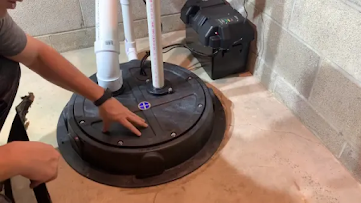How to Seal a Sump Pump Cover for Radon Mitigation
In the battle against radon infiltration, homeowners often overlook a critical component of their defense: the sump pump cover. While sump pumps are typically installed to prevent water accumulation in basements, they can also serve as entry points for radon gas if not properly sealed. In this comprehensive guide, we'll explore the importance of sealing your sump pump cover for radon mitigation and provide step-by-step instructions on how to do it effectively how to seal sump pump cover for radon.
Understanding the Threat: Radon Gas
Radon is a colorless, odorless gas that emanates from the natural decay of uranium in soil and rock. It can seep into homes through cracks and openings in the foundation, posing a significant health risk to occupants. According to the Environmental Protection Agency (EPA), radon exposure is the leading cause of lung cancer among non-smokers in the United States. Therefore, mitigating radon infiltration is crucial for maintaining a safe indoor environment.
The Role of Sump Pump Covers
Sump pumps are commonly found in homes with basements or crawl spaces to prevent flooding. However, the openings in the sump pump cover designed to allow water drainage can also provide an entry point for radon gas. To effectively mitigate radon infiltration, it's essential to seal these openings properly.
Step-by-Step Guide to Sealing Your Sump Pump Cover
1.Gather Your Materials: Before you begin, gather the necessary materials, including a caulking gun, silicone caulk, a putty knife, and safety goggles.
2.Inspect the Cover: Check the condition of your sump pump cover for any cracks, gaps, or deteriorated seals that could allow radon to enter.
3.Clean the Surface: Use a damp cloth to clean the surface of the sump pump cover, removing any dirt, debris, or residue that could interfere with adhesion.
4.Apply Silicone Caulk: Load the silicone caulk into the caulking gun and apply a generous bead of caulk around the perimeter of the sump pump cover, as well as any openings or seams where radon could penetrate.
5.Smooth the Caulk: Use a putty knife or your finger to smooth out the caulk, ensuring a tight seal and eliminating any excess material.
6.Allow Time to Dry: Allow the caulk to dry completely according to the manufacturer's instructions before testing the effectiveness of the seal.
7.Test for Radon: Consider conducting a radon test after sealing the sump pump cover to ensure that radon levels have been effectively mitigated.
By following these simple steps, you can effectively seal your sump pump cover to prevent radon infiltration and protect your family's health.
Benefits of Proper Sump Pump Cover Sealing
- Reduced Radon Exposure: Sealing your sump pump cover helps minimize the risk of radon gas entering your home, thereby reducing your family's exposure to this harmful substance.
- Improved Indoor Air Quality: By preventing radon infiltration, you can maintain higher indoor air quality levels, promoting a healthier living environment for you and your loved ones.
- Enhanced Radon Mitigation System Performance: Properly sealing your sump pump cover complements other radon mitigation measures, such as sealing cracks in the foundation and installing a radon mitigation system, for more effective overall radon reduction.
In conclusion, sealing your sump pump cover is a crucial step in mitigating radon infiltration and safeguarding your home against this silent but deadly threat. By following the steps outlined in this guide, you can take proactive measures to protect your family's health and enjoy peace of mind knowing that your indoor environment is radon-free.




Comments
Post a Comment